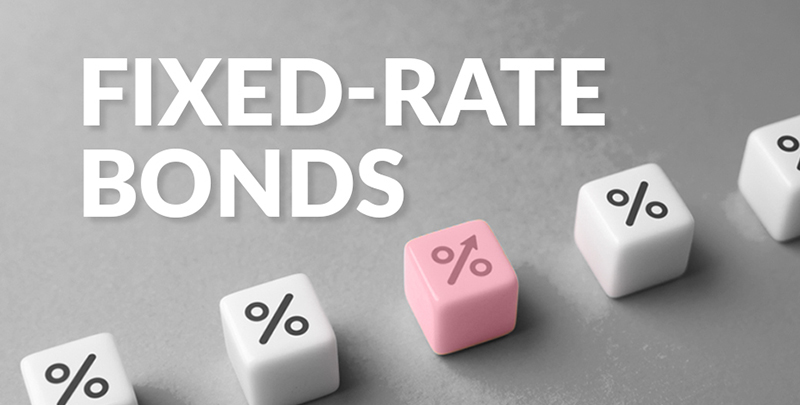Fixed-rate bonds represent one of the most stable investment options available in today's fluctuating financial markets. These financial instruments provide investors with a predetermined interest rate that remains unchanged throughout the bond's lifetime, offering predictable returns regardless of market conditions. For individuals seeking security and consistency in their investment portfolio, fixed-rate bonds offer an attractive alternative to more volatile investment vehicles, particularly during periods of economic uncertainty.
What is a fixed-rate bond?
A fixed-rate bond is a debt security that pays investors a specific interest rate (coupon rate) that remains constant until the bond reaches its maturity date. Unlike other investment options with variable returns, what is fixed-rate bond essentially offers is certainty – the issuer commits to paying the bondholder regular interest payments at a predetermined rate along with returning the principal amount (face value) upon maturity. These bonds are issued by various entities, including governments, municipalities, and corporations, with each carrying different levels of risk and potential returns. Fixed-interest bonds typically have maturities ranging from a few months to 30 years, allowing investors to choose timeframes that align with their financial goals and liquidity needs.
How do fixed-rate bonds work?
When you purchase a fixed-rate bond, you're essentially lending money to the issuer, who promises to pay you interest at regular intervals (usually semi-annually) and return your principal at maturity. The bond's price is quoted as a percentage of its par value (typically ₹1,000). The relationship between bond prices and interest rates is inverse – when market interest rates rise, existing fixed-rate bonds decrease in value, and vice versa. This occurs because newer bonds would offer higher coupon rates, making existing bonds with lower rates less attractive. The yield to maturity (YTM) calculation considers the coupon rate, current market price, and time to maturity, and assumes all coupon payments are reinvested at the same rate, providing investors with a comprehensive measure of the bond's potential return if held until maturity.
Advantages of fixed-rate bonds
- Predictable income stream: The fixed coupon payments provide a reliable source of income, making fixed-rate bonds ideal for retirees or investors with regular income needs.
- Capital preservation: When held to maturity, these bonds return the original principal, protecting your initial investment.
- Portfolio diversification: Fixed-interest bonds typically have a low correlation with stocks, helping reduce overall portfolio volatility.
- Varied options: Investors can choose from government, corporate, or municipal bonds with different credit ratings, maturities, and yields to match specific investment goals.
- Safety net: High-quality fixed-rate bonds from creditworthy issuers offer significantly lower risk compared to equity investments, providing stability during market downturns.
- Lock-in advantage: During periods of declining interest rates, previously purchased bonds with higher rates become more valuable, offering potential capital appreciation if sold before maturity.
Disadvantages of fixed-rate bonds
- Interest rate risk: When market rates rise, existing fixed-rate bonds become less attractive, causing their market value to decline.
- Inflation risk: The fixed returns may not keep pace with inflation, potentially eroding purchasing power over time.
- Credit/default risk: There's always a possibility that the issuer might face financial difficulties and fail to make interest payments or return the principal.
- Liquidity challenges: Some fixed-rate bonds, particularly those with long maturities or from smaller issuers, may be difficult to sell quickly without accepting a significant price reduction.
- Opportunity cost: By locking in a fixed rate, investors might miss out on higher returns if interest rates rise substantially during the bond's term.
- Call risk: Some bonds include provisions allowing issuers to redeem them early, typically when interest rates fall, forcing investors to reinvest at lower prevailing rates.
Difference between fixed-rate bonds vs floating-rate bonds
- Interest rate structure: Fixed-rate bonds maintain the same interest rate throughout their lifetime, while floating-rate bonds adjust periodically based on benchmark rates.
- Price sensitivity: Fixed-rate bonds are more sensitive to interest rate changes than floating-rate bonds, which adjust their yields to reflect current market conditions.
- Investor preferences: Conservative investors typically prefer fixed-rate bonds for their predictability, while those anticipating rising interest rates might choose floating-rate bonds.
- Market timing: Fixed interest bonds are generally more advantageous when interest rates are expected to fall or remain stable, while floating-rate bonds perform better in rising-rate environments.
Conclusion
Fixed-rate bonds remain a cornerstone of balanced investment portfolios, offering stability, predictable income, and capital preservation. While they carry certain risks like interest rate sensitivity and inflation concerns, their benefits often outweigh these drawbacks for many investors, particularly those with lower risk tolerance or specific income needs. Understanding the nuances of fixed-rate bonds and how they respond to changing economic conditions is crucial for making informed investment decisions. For those seeking stability with reasonable returns, Axis Bank's Fixed Deposits provide similar benefits with guaranteed returns and minimal risk exposure, making them an excellent complement to a diversified investment strategy.
Also Read: What are Inflation Indexed Bonds?
FAQs
Are fixed-rate bonds a good investment?
Fixed-rate bonds can be excellent investments for those seeking predictable income and capital preservation. They're particularly valuable for conservative investors, retirees, or anyone needing stable returns without significant risk. Their appropriateness depends on your financial goals, time horizon, and current interest rate environment.
What are the disadvantages of a fixed-rate bond?
The main disadvantages include vulnerability to interest rate increases (which decrease bond values), potential purchasing power erosion due to inflation, limited liquidity for some bonds, and opportunity cost during rising rate environments. Additionally, fixed-rate bonds typically offer lower long-term returns compared to equities.
Is a fixed bond tax-free?
Most fixed-rate bonds generate taxable interest income, but certain Municipal Bonds in India may offer tax advantages. Some special government bonds provide tax benefits under Section 80C of the Income Tax Act. However, taxation varies based on the issuer type and specific bond characteristics, making it essential to consult a tax professional.
Can fixed-rate bonds lose money?
Yes, fixed-rate bonds can lose money if sold before maturity when interest rates have risen (decreasing their market value). They can also lose value through issuer default, though this risk varies significantly based on the issuer's creditworthiness. However, if held to maturity, high-quality bonds typically return the full principal amount.
Disclaimer: This article is for information purpose only. The views expressed in this article are personal and do not necessarily constitute the views of Axis Bank Ltd. and its employees. Axis Bank Ltd. and/or the author shall not be responsible for any direct / indirect loss or liability incurred by the reader for taking any financial decisions based on the contents and information. Please consult your financial advisor before making any financial decision.








